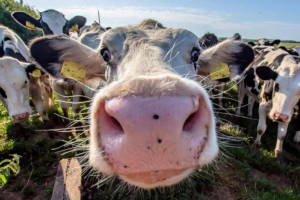Yesterday, one of my sisters complained that she was “not willing to shut [her] life down” in response to my advice on flying. I agree completely and believe much of what we are doing in response to the outbreak is completely out of proportion to the current threat from Covid-19 (see the crazy Costco toilet paper shopping video I shared on FB earlier today). I am sitting in the library across from a woman with two small children who is obsessively wiping, sanitizing, and cautioning her child against touching his face as he reads a library book, a child that she apparently just picked up from school. The minute she looks away, he picks his nose. The only thing she is succeeding at is making everyone crazy. The evidence is quite strong that her children are at almost no risk of serious disease and no child is every going to learn not to touch his face. If you are really worried, surrounding your kids with piles of shared books might not be a good idea.
On behalf of my sister, I decided to do a deeper dive into the risk of flying. Before I get to that, a few quick thoughts and updates.
- The County Health Department finally agreed to test my son after nine days with a dry cough and a low-grade fever, but only because his mom is a physician and they don’t want to risk infection in health care workers. If it comes back positive, I may be writing my next post from self-quarantine.
- Three more patients have died at the Life Care Nursing Home, the site of the original outbreak, bringing the total deaths there to 16 out of the 23 deaths in the state.
- Johns Hopkins has an excellent website for tracking the outbreak, which is, sadly, far more up to date than any of the official public health websites.
- We should learn from the cultures of the world where dangerous infectious diseases are just a part of life. Specifically, rather than becoming OCD about handwashing, consider following the tradition of many world cultures to reserve your right hand for tasks that require cleanliness (eating, grooming, touching your face) and your left for tasks that risk contamination (opening doors, pumping gas, and, well, you know). Don’t stop washing your hands, but, if done properly, keeping one hand clean can be at least as effective as all that Purell. Also, can we just drop the fist bump and adopt the Japanese bow? What is the obsession with touching everyone we meet?
- Everyone from Pence to Jay Inslee is making a big deal of the fact that people will not be charged for Corona Virus testing. This could only be something to boast about in the US with its messed up health care system. Can you imagine trying to control this disease if you created a disincentive for people to get tested? Unbelievable.
A detailed risk assessment for flying requires a series of assumptions and the results, of course, depend heavily on which ones you choose. I considered two scenarios, a worst case and a best case to evaluate the risk. I will run through the assumptions. I can provide the spreadsheet to anyone who wants to see the details on the calculations. I would be happy to set up a version of this that allows users to enter their own assumptions if anyone out there can advise me on how to do that in WordPress. For now, if anyone thinks my numbers are off or wants an estimate based on a different assumption, just let me know.
Assumptions
The key questions to answer are:
- How many potential exposures will you have?
- What is the rate of infection among the passengers?
- What is the probability of disease transmission for each exposure?
- What is the case fatality rate for the infection?
I have made estimates based on a low and high-risk scenario to try to bracket the range of possibilities. Let’s take each in turn.
Number of Exposures
I divided passengers into two groups, those within one seat of you on the plane (high exposure) and those in the rest of the plane. If we assume a full 737 at maximum capacity, you will have eight high exposure contacts and 207 low exposure contacts. We also have to consider the hazards on the trip through the airport. You are likely to have at least two close contacts (one ahead and one behind) in the TSA line. Screening itself is potentially fraught with peril given the whole process of stripping down and putting all of your stuff in bins that have been used by hundreds of other passengers, putting your phone on a scanner used by every other passenger, or possibly touching a fingerprint scanner in the CLEAR line. Not sure how to count all of that here, but I will assume that sanitary wipes and hand washing afterwards is negating the risk except for the two close contacts in line. That gives 10 close contacts and 207 distant contacts
Rate of Passenger Infection
If this flight is originating from Seattle, it is reasonable to assume that the prevalence of infection among passengers reflects the prevalence of infections in the Seattle metro area, a number we don’t know because of limited screening availability. We do, however, know the number of deaths with relatively high confidence, which now stands at 23. We also have relatively good data from Korea on their case fatality rate (0.6%). At the other extreme, the WHO announced a global CFR of 3.4%. If we divide the number of deaths by the CFR, there would be between 680 and 3800 cases in Seattle. If we also need to estimate what percent of the population who are air travelers and decide what is the likelihood that a case is an air traveler.
Risk of Viral Transmission
I don’t have any good data for the probability that you would get infected from a particular level of exposure to a case. There should be some buried in the epidemiology related to individual health department efforts to contain cases. I will try to track down the numbers on this, but if anyone knows of good data, please share.
Case Fatality Rate
These rates vary dramatically with age. I have focused on those 60 and over, but even in that group the risk soars in older patients. The Korean rate is 2.8%. The Chinese rate was 6.0%.
Here’s the way the numbers break down.
| High Risk | Low Risk | |
| Prevalence of Infection Among Passengers | ||
| Seattle cases | 3833 | 676 |
| % of all cases occurring in Air Travelers | 100 | 25 |
| Covid-19 Prevalence Among Air Travelers | 0.4% | 0.02% |
| Risk of Viral Transmission | ||
| For High Exposure Contacts | 50% | 10% |
| For Low Exposure Contacts | 5% | 1% |
| Case Fatality Rate | 6.00% | 2.80% |
| Risk of infection | 5.90% | 0.05% |
| Risk of death | 0.16% | 0.0015% |
In other words, air travel from Seattle has a probability of Covid-19 infection that can be conservatively estimated at 0.05% and a risk of death of 0.0015% in people 60 and over. Under more conservative assumptions these risks could rise substantially, particularly for older travelers. Note that for those under 60, the risk of death would be closer to 1 in 2 million.
Bottom Line: If you are over 60, think twice about commercial air travel. If you do need to go, be scrupulous about hand washing and consider a mask while flying. If you are under 60, you are probably OK for now, but the picture may change as the outbreak grows.

